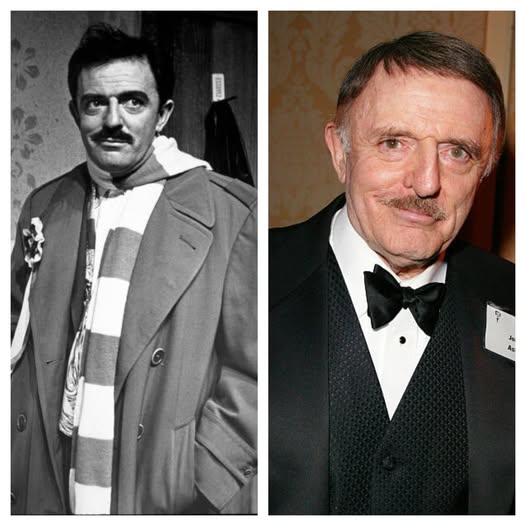
The character of Gomez Addams, now one of television’s most beloved and eccentric patriarchs, wasn’t fully formed when The Addams Family first made the leap from cartoon panel to small screen in 1964. In fact, in Charles Addams’ original New Yorker illustrations, the character was nameless. That changed when John Astin stepped into the role—and insisted that this flamboyant gentleman of the macabre needed a proper name. Rejecting oddball suggestions like “Repelli” and “Pubert,” Astin lobbied for “Gomez,” a name he felt better captured the character’s romantic flamboyance and sly charm. It was the first of many creative decisions that would forever define the Addams patriarch.
Astin’s influence didn’t stop at a name. The original vision for Gomez was more subdued, but Astin reimagined him as a man of grand passions and joyful absurdities. With wild-eyed enthusiasm and theatrical flair, he gave Gomez a distinct personality—equal parts romantic lead, slapstick clown, and refined oddball. His adoration of Morticia became the character’s emotional anchor, transforming what could have been a mere caricature into a fully realized (if deliciously deranged) man in love.
One of the most enduring quirks of the character—his gleeful destruction of model trains—was also Astin’s invention. A lifelong fan of model railroads, Astin suggested the now-famous sequences where Gomez maniacally crashes miniature trains in his study. These scenes became a perfect encapsulation of Gomez’s offbeat pleasures and chaotic energy, blending childlike delight with explosive eccentricity.
Astin’s physical performance was just as vital. His expressive face, roving eyes, exaggerated gestures, and mischievous grin were all unscripted flourishes that he improvised on set. Drawing on the influence of silent film legends like Charlie Chaplin and Buster Keaton, Astin added slapstick elements and cartoon-like physicality that aligned perfectly with the show’s surreal and darkly comedic tone. Gomez wasn’t just played—he was inhabited with a kind of kinetic poetry.
The chemistry between John Astin and Carolyn Jones, who played Morticia, was another key to the show’s magic. At a time when married couples on television were typically portrayed with bickering or disinterest, Gomez and Morticia were madly in love—and unashamed of it. Their passionate, synchronized antics and over-the-top declarations of affection created a romantic dynamic that felt revolutionary for 1960s audiences. Astin and Jones collaborated closely to keep that spark alive in every scene, making their relationship the heart of the series.
Astin’s commitment to the role extended far beyond performance. He was deeply involved behind the scenes, offering ideas that enriched Gomez’s persona—like giving him an unusual fondness for law, fencing, cigars, and all things peculiar. His creative contributions helped mold Gomez into more than just Morticia’s husband or the head of a kooky household—he became a charmingly complex character with endless quirks and contradictions.
Though The Addams Family ran for only two seasons (1964–1966), Astin’s portrayal of Gomez left a lasting cultural imprint. He would go on to reprise the role in later spin-offs and animated adaptations, including voicing Gomez in the 1990s cartoon series. His version of the character set the bar for every performance that followed, influencing how future generations would interpret the Addams legacy.
As of January 2025, John Astin is 94 years old, living in Baltimore, Maryland, with his wife, Valerie Ann Sandobal. Having retired from acting in 2021, Astin’s legacy endures not just through reruns, but through the joy he brought to millions. His Gomez Addams remains a masterclass in character creation—a blend of wit, whimsy, and heart that continues to captivate audiences decades later.
Through creativity, spontaneity, and unrelenting dedication, John Astin didn’t just play Gomez Addams—he invented him. And in doing so, he turned a nameless cartoon figure into one of the most iconic and enduring characters in television history.
